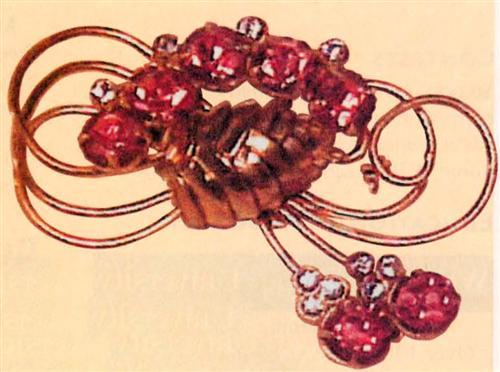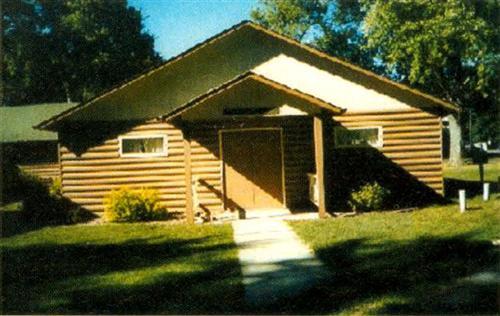Sign up for the Family Tree Newsletter Plus, you’ll receive our 10 Essential Genealogy Research Forms PDF as a special thank you!
Get Your Free Genealogy Forms
"*" indicates required fields
The Road to Rhode Island
As someone who grew up Baptist in Rhode Island, I hold Roger Williams, founder of the first Baptist church in America and of the state of Rhode Island and Providence Plantations, in especially high esteem. I grew up just a few miles down the road from Roger Williams’ mission to the Indians, Smith Castle, and my father, Eugene Roy, was born in Warwick, RI. But I was never accepted as a true Rhode Islander by many of the natives because I was born in Florida and my mother, Ruth (Peigler) Roy, was from North Carolina.
I never dreamed my mother’s ancestry would have given me any connections to Rhode Island, which I longed for. But, after many years of tracing her family tree with little success, I recently turned up a connection. A letter to a librarian in South Carolina seeking an obituary on my grandmother’s line, the Gilberts, put me in touch with an expert on them, Horace Gilbert. He informed me that I was descended from Michael Gilbert, a vicar of Aldborough in Yorkshire, England, and a 1624 graduate of Cambridge University.
On my annual summer vacation to Rhode Island, I visited Roger Williams’ church in Providence, where I learned he was a 1627
graduate of Cambridge. I had an ancestor who was a contemporary of Roger Williams, and both studied theology at the same school!
I excitedly wrote to Cambridge, asking how likely it was that they knew each other. A professor G.T. Martin replied: “I think it highly likely — virtually certain — that Michael Gilbert and Roger Williams would have known each other. But no document, of course, to prove it (at least here). Cambridge and the university were small in the 17th century. There were relatively few undergraduates.”
Now I have a historical connection to the beautiful state in which I grew up and of which I have many fond memories.
New Math
My uncle didn’t like the terms “half” and “step” when referring to brothers and sisters. So, although he was one of 15 children in a blended family, at a family reunion he stated that he had five and a half sisters and three brothers. He explained that three sisters plus five half sisters equals five and a half sisters. And six half brothers equals three whole brothers.
My Favorite Martin
I’ve been interested in genealogy for several years and have gotten stuck on a few names, mostly a Margaret Martin from Preble County, Ohio. I was mentioning this to one of my best friends, Erin Martin, when she stopped me in mid-sentence: “Uh, Melissa, we’re related.” It turns out that Margaret, my fifth-great-grandmother, was the sister of her fifth-great-grandfather.
What I find even more interesting is that my maternal grandmother, who’s on a different branch entirely, happened to have an old photo album from the 1800s with the name Martin attached to it. I collected the names from her and showed them to Erin — the photo album actually belonged to her great grandfather. Talk about your small world!
THIRD WIFE’S THE CHARM
My grandfather was married three times and is buried between his first two wives. His third wife survived him and gave instructions that she did not want to be buried with him. After all, he would have two wives to rise with him on Judgment Day, and she didn’t want to be with them!

When my grandmother died and we were planning her funeral, it was one of the coldest and snowiest winters I could ever remember. We had two-to three-foot snowdrifts everywhere with the north-south roads drifted shut. My father had to get someone to dig the grave and was having an awful time finding help. Finally a good friend got six men who used pick-axes to break the frozen ground.
When we were at last able to gather the family at the funeral home and I saw Grandma in her casket, I was dismayed that no one had thought to put a brooch (or “breast pin” as she called it) on her dress. This was so important to her for she was never without one, even when working around the house. It was important to me too, so I quickly left and hurried back home to get a special brooch from my jewelry collection. I put it on Grandma, unaware whether this little touch was noticed by anyone except me.
The weather was still against us when we left Pleasant Valley Church. The hearse and many of the cars got stuck. The procession finally reached the highway after a lot of pushing by the men and we made it to the cemetery.
The wind whistled through the tent as the minister said something about Melissa Delp meeting her beloved husband Lewis, or “Mr. Delp” as she called him. Despite the sub-zero temperature, I was caught up with the minister’s words, thinking of Grandma. Even more special than the words was what I was holding in my hand: the pink jeweled brooch that I’d pinned on my grandmother’s dress at the funeral home. Just after the undertaker had closed the casket at the funeral home, he came over to me, shook my hand and very quietly slipped something into it. It was the brooch.
After 51 years, I still have the brooch in my jewelry box, and to this day I have never worn it. I have often wondered why. The best answer I can give is this was meant as a special gift to my Grandma Delp.

Not everyone, I suppose, can walk into a museum and find her family history on display. I can when I visit the Brunson Heritage House in my Iowa hometown. The Brunson House, a wing of the McCallum Museum, was opened in 1991 to hold an entire household of family memorabilia and antiques that had belonged to my cousin Dorthea Brunson and our collective ancestors.
Dorthea’s maternal grandparents, Zebulon and Mathilda Guertin, were my maternal great-grandparents. The parents of 15 children, they emigrated to northwest Iowa from Canada in 1879. One of the children, Edna, was Dorthea’s mother. Edna’s brother, Edgar, was my grandfather. Never married, Dorthea left her house and its contents to the Osceola County Historical Society when she died in 1984. She left $60,000 for upkeep on her home, which she wanted open for public viewing of her historical collection. The society did this for several years, but it became difficult maintaining both the residence and the McCallum Museum. They did the next best thing: They sold Dorthea’s house and built an addition to the museum to hold her gift to the community.
Having photographed the house before moving day, the committee was able to closely replicate the way things had been in Dorthea’s house. The museum is divided into a bedroom, parlor and kitchen. The rooms look as inviting as Dorthea’s modest home must have been. The kitchen is well-stocked with utensils from earlier eras. In the bedroom stands a ceiling-high wooden wardrobe and a huge, ornately carved oak bed made up with a quilt and plump pillows. The parlor has comfortable stuffed chairs with reading lamps beside them, and Dorthea’s father’s desk from when he taught country school in the early years of the 20th century.
I would like to have had some of the items that are in the Brunson House, especially the portraits and photos, but that wasn’t Dorthea’s plan. So I must be satisfied with her choice to see to it that family heirlooms didn’t fall into strangers’ hands. Because of her generous legacy, I can visit my family’s past whenever I return to my hometown.
ADVERTISEMENT

